- 【萌新向】Sql Server保姆级安装教程-图文详解手把手教你安sq
- Python从入门到网络爬虫(内置函数详解)
- 实现vue项目和springboot项目前后端数据交互
- 【MySQL】不就是多表查询
- Cannot resolve plugin org.springfra
- django如何连接sqlite数据库?
- springboot监听器的使用(ApplicationListene
- ERROR 2003 (HY000): Can‘t connect t
- idea导入springboot项目运行教程
- Spring6中删除了CommonsMultipartResolver
- 【vs code】|——rust开发环境搭建
- DataGrip连接数据库设置(MySQL、Oracle、SQL Se
- Spring + vue 项目部署(全网最详细教程
- MySQL——事物
- Spring5深入浅出篇:Spring与工厂设计模式简介
- 关于Spring Boot 2.x升3.x的那些事
- 【mysql】SQL优化15种方法
- django.core.exceptions.ImproperlyCo
- springboot3整合SpringSecurity实现登录校验与权
- SSM框架整合:掌握Spring+Spring MVC+MyBatis
- Mysql第三篇---响应太慢?数据库卡顿?如何优化?
- 【SQL开发实战技巧】系列(六):从执行计划看NOT IN、NOT E
- LLM预备知识、工具篇——LLM+LangChain+web UI的架
- Java Springboot SSE 解决永久存活 判断客户端离线问
- Springboot校园兼职系统的设计与实现计算机毕设源码22161
- [已解决]2002-can‘t connect to server o
- 使用Spring Cache优化数据库访问
- Spring Cloud Alibaba全家桶——微服务链路追踪Sky
- MySQL同时In俩个字段,In多个字段,Mybatis多个In查询问
- 【解决办法】Property ‘sqlSessionFactory‘
1、安装node.js
- 太高版本的win7不支持
这里安装node-v12.16.2-x64.msi,指定安装位置后直接按下一步就可以。
- npm是node内置的工具
这里配置npm的镜像cnpm(提高下载速度,以后用到npm的命令都可以用cnpm命令替换)不指定cnpm版本使用如下命令会报错:
npm install -g cnpm --registry=https://registry.npm.taobao.org
- 错误信息:
npm WARN notsup Unsupported engine for npm-normalize-package-bin@3.0.1: wanted:{"node":"^14.17.0 || ^16.13.0 || >=18.0.0"} (current: {"node":"12.16.2","npm":"6.14.4"}) npm WARN notsup Not compatible with your version of node/npm: npm-normalize-package-bin@3.0.1- 检查错误,参照网上的对应版本图,node12要用cnpm 6版本,输入如下命令:
npm install -g cnpm@6 --registry=https://registry.npm.taobao.org
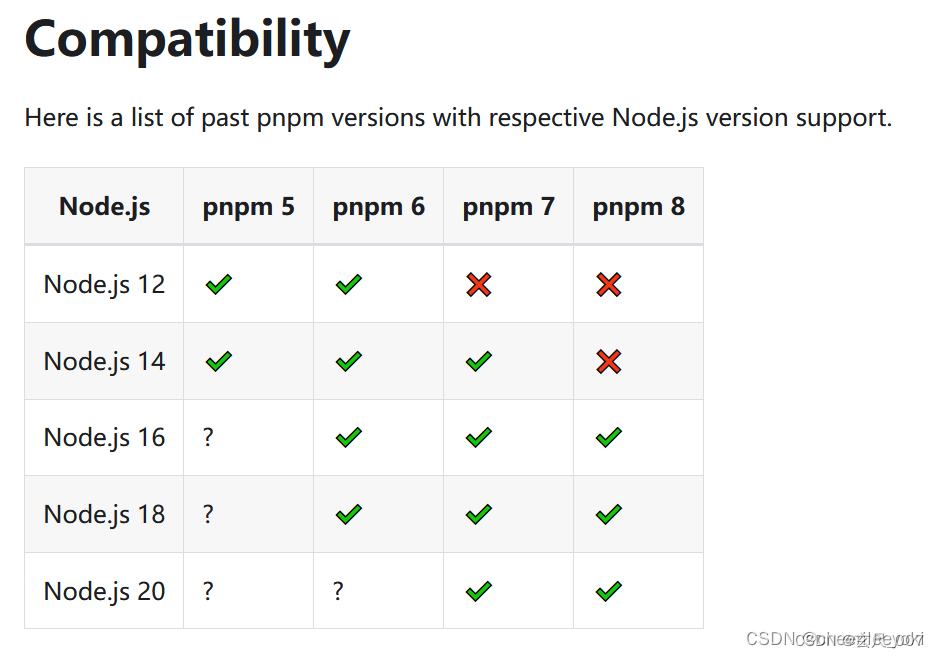
- 查看node和npm版本
node -v npm -v
2、安装vue-cli脚手架
- vue-cli是在node基础上构建的工具,而vue-cli又可以快速搭建含vue功能的模块(即模块化开发)。安装vue-cli 3.x脚手架命令如下:
cnpm install @vue/cli -g
- 查看版本
vue -V
3、创建vue项目
vue-cli脚手架创建的是模块化项目,使用模块化开发(.vue后缀的文件为单文件组件,一个文件里封装了html、js、css代码)。项目属于单页面应用(SPA),通过路由跳转链接,不利于SEO(爬虫抓取不到内容),可以用Nuxt框架解决该问题(这是后话)。所以说vue比较适合做后台管理系统。但前端分离的插拔特性,可以让它方便地切换为移动端浏览器、app或小程序。
- 这里有两种方法创建,第一种是用命令(会在当前文件夹下创建文件夹):
vue create 项目名
- 第二种用UI可视化界面创建:
vue ui
启动vue可视化工具,会在浏览器中打开,创建过项目的需要返回主页:
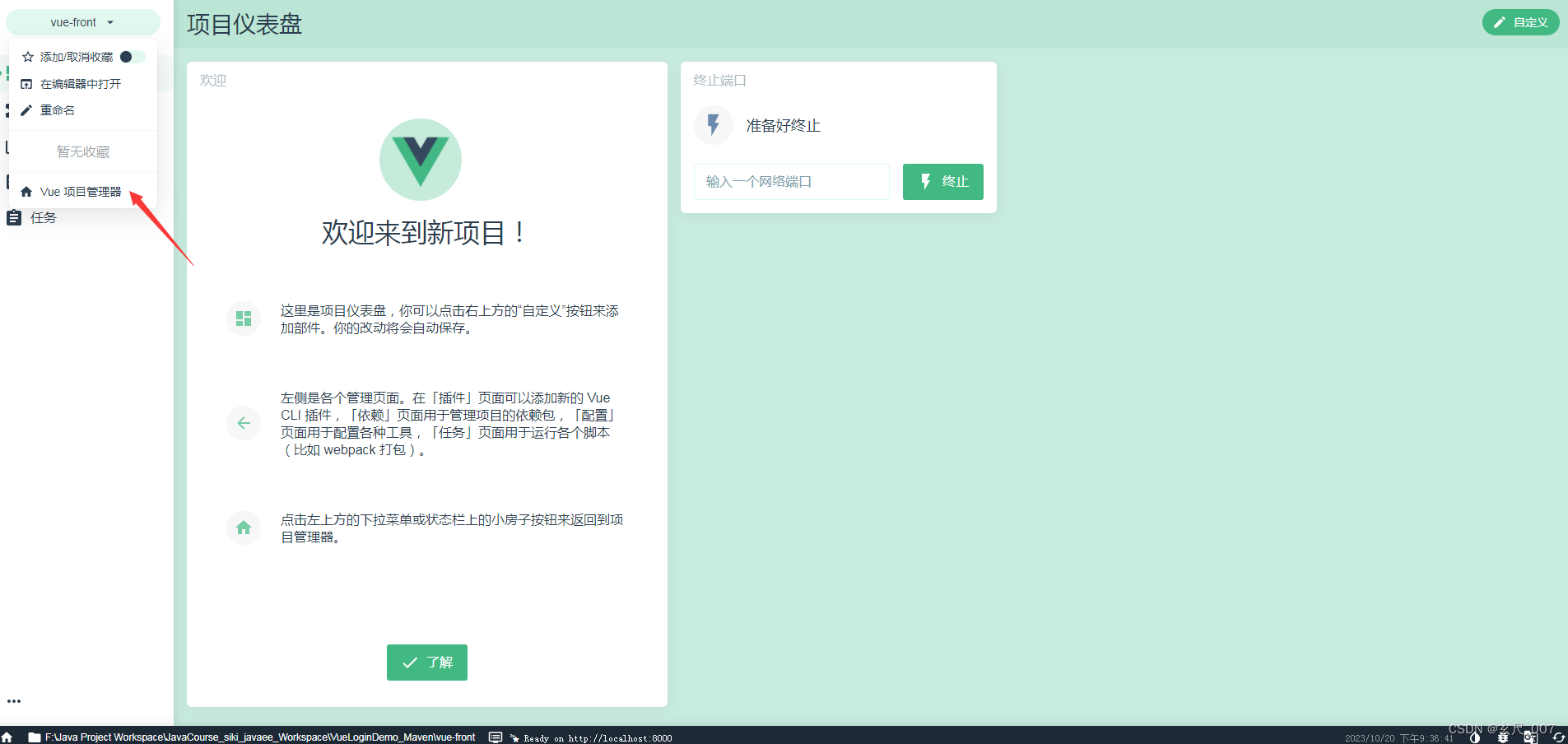
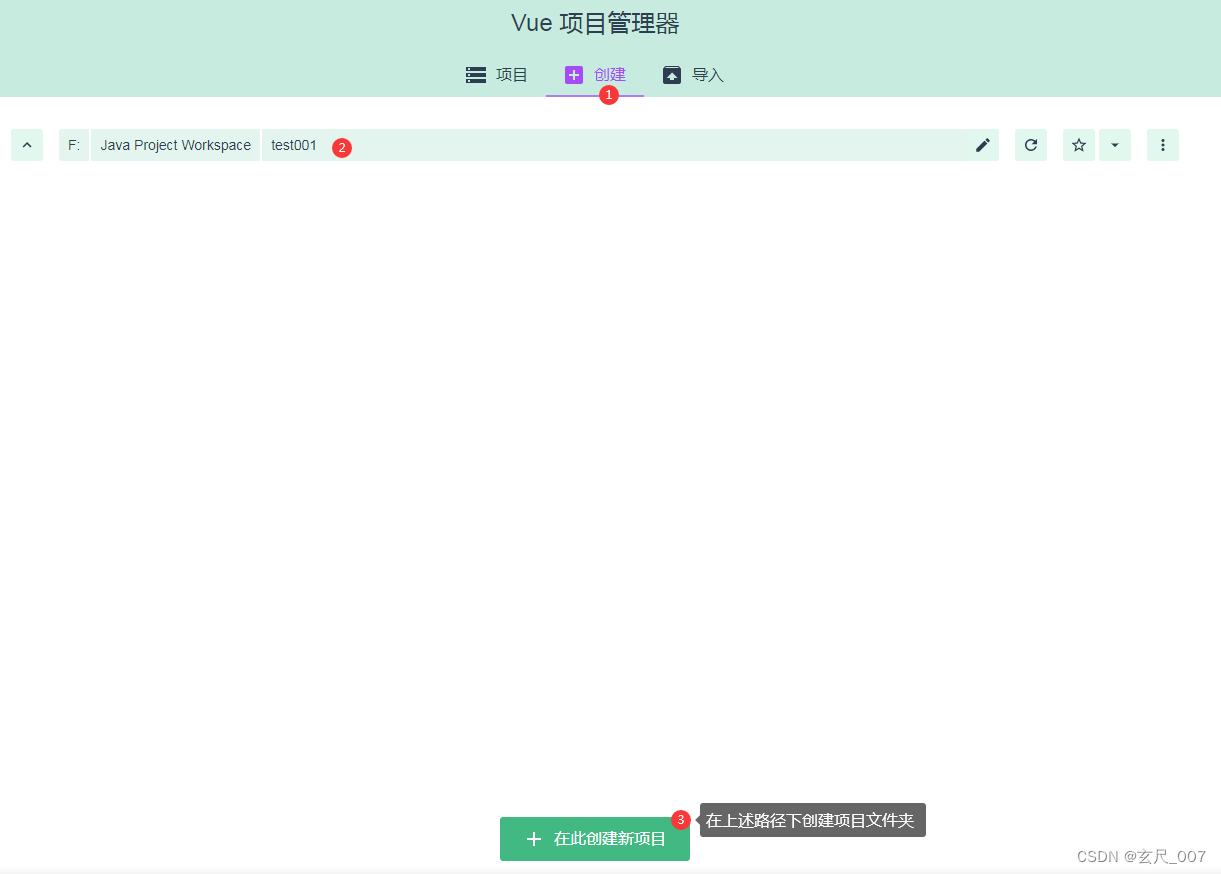

选手动配置
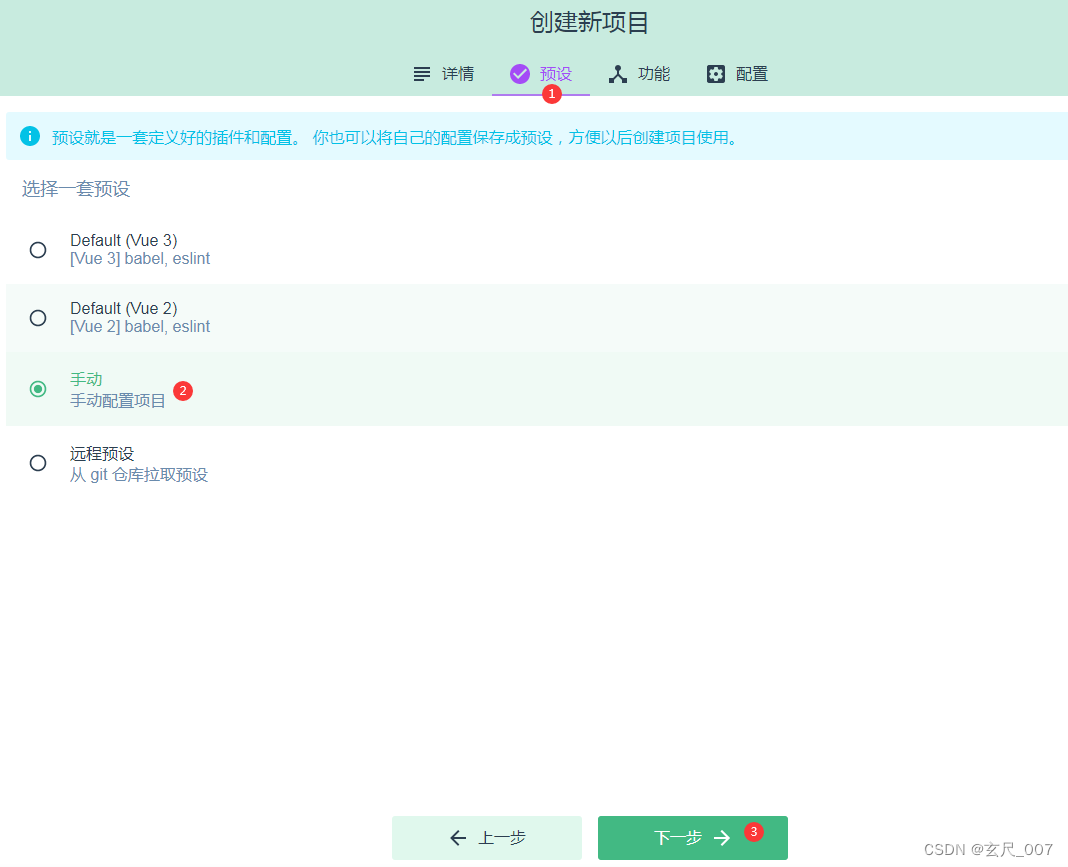
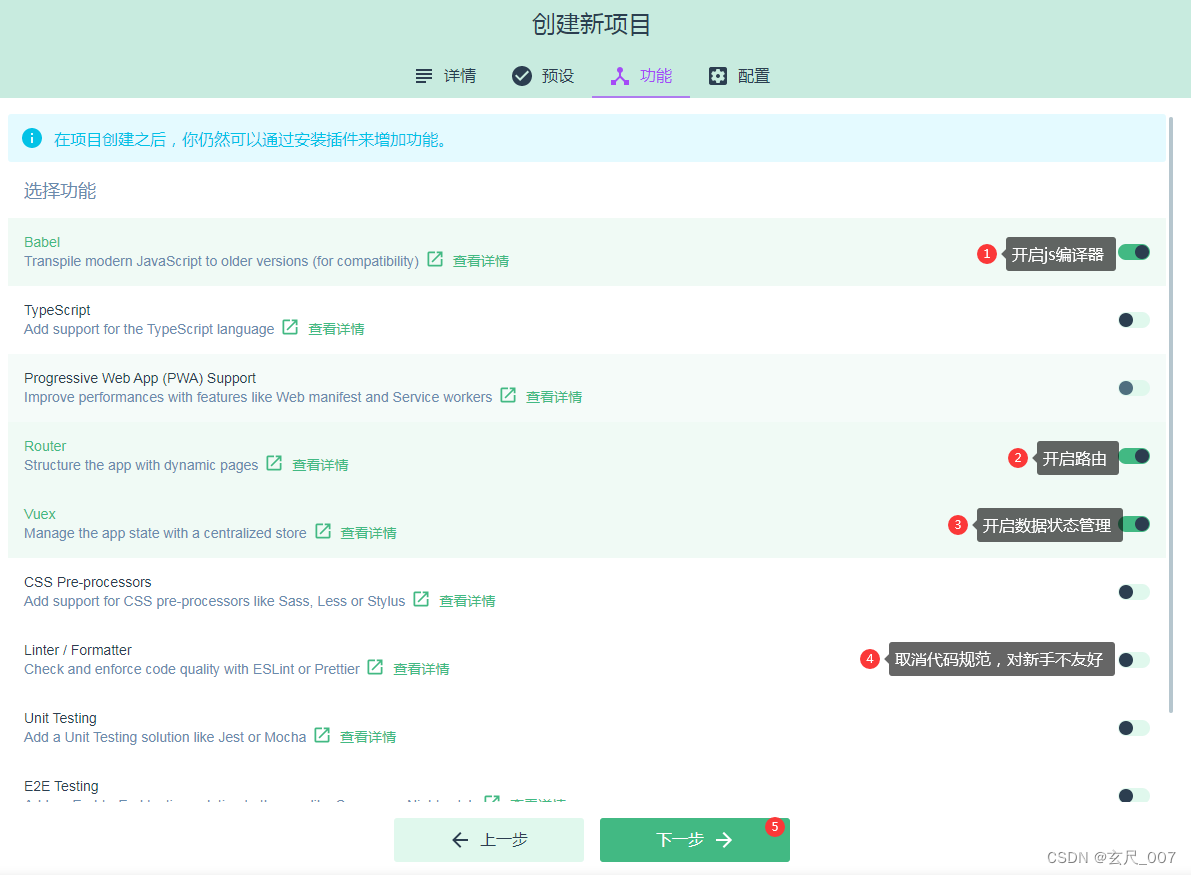
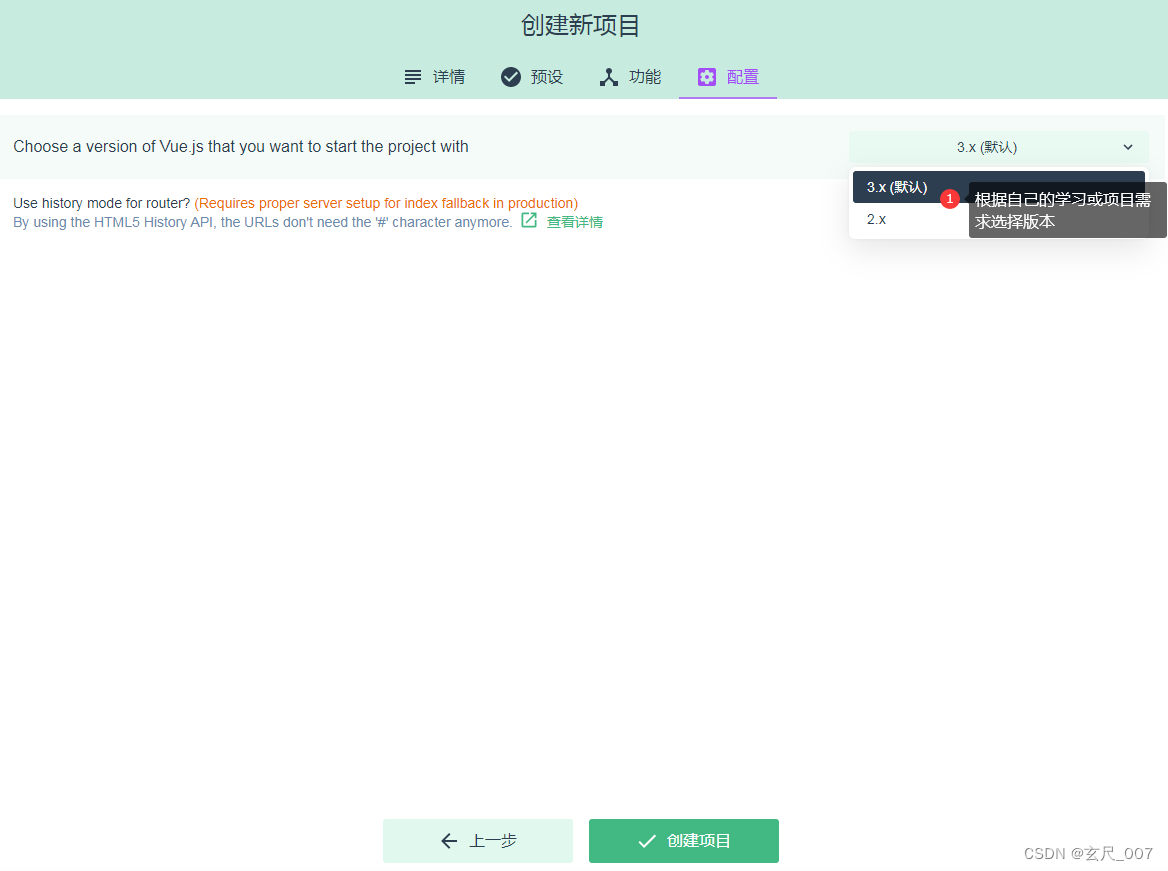
点创建即可。
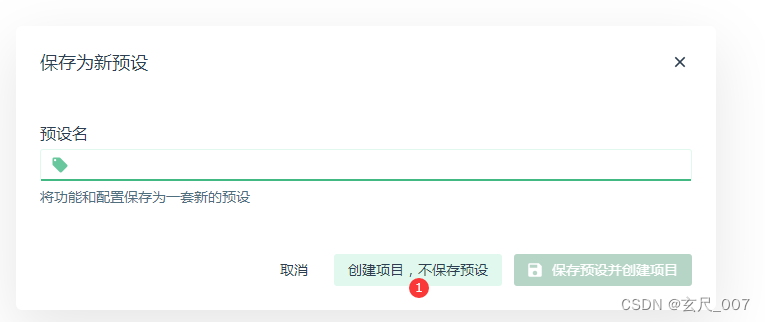
这里不保存预设。
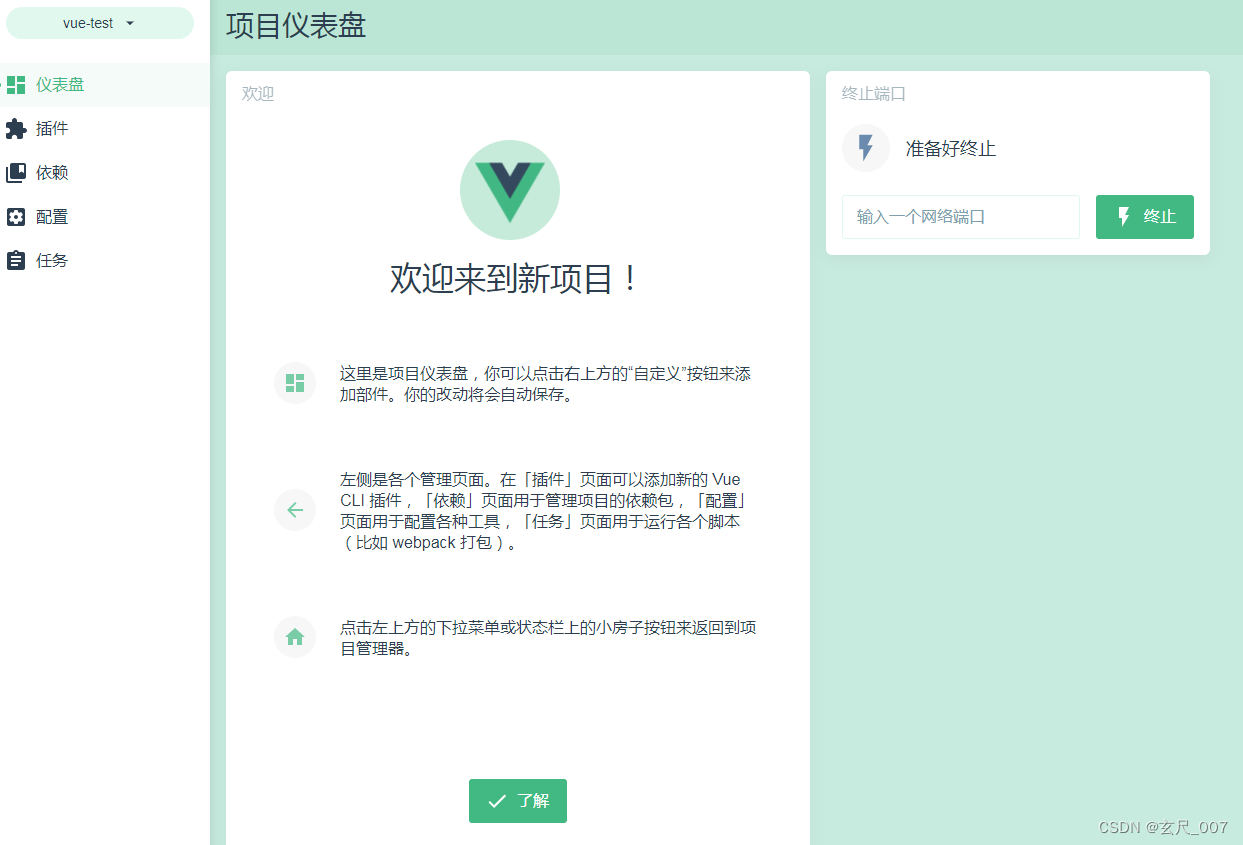
等待安装完,来到欢迎界面就可以就可以关闭网页了,后期安装其它插件我们可以通过命令行执行,也很方便。
- 进入项目文件夹下,cmd执行命令启动项目
cd 项目文件夹名 npm run serve
运行后,显示如下,在浏览器中输入其中一个地址即可看到欢迎界面,说明vue项目成功跑起来了。

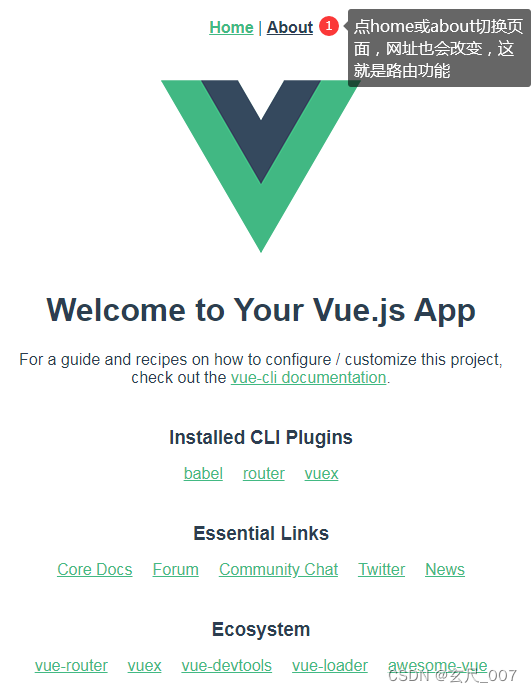
4、数据交互的准备工作
这里默认你已经懂得vue编码的一些基础知识,由于缩减篇幅,所以在此只会贴上关键代码。
前后端分离的项目,要进行数据交互,我们使用的是异步请求工具,JS使用的是Ajax,而vue使用的是axios
- 安装axios插件:
cnpm install axios -S cnpm i vue-axios -S
5、前后端数据交互之前端
前后端人员协商会有接口文档,我们以登录和注册为例:
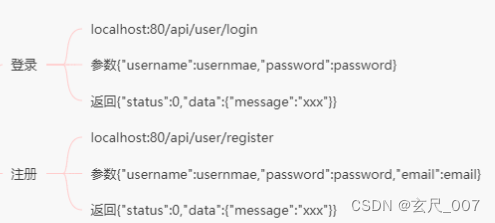
- 登录请求
//发送get请求 查询用户(用post更安全,这里只是举例使用方法) this.axios.get("http://localhost:80/api/user/login",{ params:{ "username":username, "password":password } }).then(resp => { //数据传输成功 //用户名密码正确 if(resp.data.data_status === 0){ //路由跳转 router.push("/") } else{ //显示失败消息,可能是用户名或密码错误 ElMessage({ message:resp.data.data.message, duration:1000, type:"error" }) } }).catch(error => { //数据传输失败 console.log(error) })- 注册
//访问后台保存用户(注册) this.axios.post("http://localhost:80/api/user/register",{ "username":username, "email":email, "password":password }).then(function(response){ //发送成功,接受返回注册状态信息 if(response.data.data_status === 0){ //注册成功,路由跳转 router.push("/login") } else{ //显示注册失败,用户已存在 ElMessage({ message:response.data.data.message, duration:1000, type:"error" }) } }).catch(function(response){ alert("数据传输失败") })- 注意,这里的data_status、data.message是由后端返回的数据决定的,名称要与后端设定的返回值一致,可以先用console.log(response)查看一下返回的数据。
6、前后端数据交互之后端
- GET提交:请求的数据会附在URL之后,在地址栏显示出来;POST提交:把提交的数据放置在是 HTTP 包的包体(请求体)中。地址栏不会改变。
- 后端Get不要在参数加@RequestBody,因为请求是在url里中传参
Post要在参数加@RequestBody,因为是在请求体中取值
- 后端登录
//后端登录 @GetMapping("/api/user/login") @ResponseBody//使用ajax时必须加,会把返回类转化为json Get不要加@RequestBody,是在url里中传参 public CommonResultloginVue(User user){ //注册用户逻辑 int data_status = userService.loginVue(user); if (data_status == 0) { return CommonResult.success(Message.createMessage("注册成功")); } //实际开发中的状态码举例: 10001 用户已存在 10002 用户名或密码错误 20001 商品已存在 。。。 else if(data_status == 2){ return CommonResult.failed(data_status, Message.createMessage("用户名或密码错误!!!")); } else { return null; } } - 后端注册
@PostMapping("/api/user/register") @ResponseBody//使用ajax时必须加,会把返回类转化为json Post要加@RequestBody,是在请求体中取值 public CommonResultregisterVue(@RequestBody User user){ //System.out.println(username); // System.out.println(user); //注册用户逻辑 int data_status = userService.registerVue(user); if (data_status == 0) { return CommonResult.success(Message.createMessage("注册成功")); } else { return CommonResult.failed(data_status, Message.createMessage("用户名或邮箱已存在,请更改信息!!!")); } } Get请求不要在参数前加@RequestBody,Post请求要在参数前加@RequestBody。重要的事情说三遍!!!
这样就可以直接使用User user参数来接受值
- 后端登录还是注册都会有返回值,类名可以自定义,但类里的属性名称定义要和接口文档一致,这样前端接收到对应的值。这里我们定义了一个泛型的CommonResult
。 package com.zzz.login_demo.utils; public class CommonResult
{ private Integer data_status; private T data; protected CommonResult() { } protected CommonResult(int data_status, T data){ this.data_status = data_status; this.data = data; } //返回成功(不带data信息) public static CommonResult package com.zzz.login_demo.utils; public class Message { private String message; protected Message() { } public Message(String message) { super(); this.message = message; } public static Message createMessage(String message) { return new Message(message); } //get/set... }- 测试前后端数据交互时报错:Access-Control-Allow-Origin
Access to XMLHttpRequest at 'http://xxx' from origin 'http://localhost:8080' has been blocked by CORS policy: No 'Access-Control-Allow-Origin' header is present on the requested resource.
这是跨域请求出错,可以在前端或后端配置跨域请求。
感觉添加后端配置跨域请求比较方便,在每个Controller类的注解@Contoller的下一行添加注解@CrossOrigin即可。
7、扩展
vue项目如何部署到服务器?(Nginx)
前端、后端分开开发时如何模拟用假数据测试?(mockjs、postman)
感兴趣的童靴可以留言给我,我会安排写作。
- 测试前后端数据交互时报错:Access-Control-Allow-Origin
- 后端登录还是注册都会有返回值,类名可以自定义,但类里的属性名称定义要和接口文档一致,这样前端接收到对应的值。这里我们定义了一个泛型的CommonResult
- 后端注册
- 注意,这里的data_status、data.message是由后端返回的数据决定的,名称要与后端设定的返回值一致,可以先用console.log(response)查看一下返回的数据。
- 注册
- 登录请求
- 安装axios插件:
- 进入项目文件夹下,cmd执行命令启动项目
- 第二种用UI可视化界面创建:
- 这里有两种方法创建,第一种是用命令(会在当前文件夹下创建文件夹):
- 查看版本
- vue-cli是在node基础上构建的工具,而vue-cli又可以快速搭建含vue功能的模块(即模块化开发)。安装vue-cli 3.x脚手架命令如下:
- 查看node和npm版本
- 检查错误,参照网上的对应版本图,node12要用cnpm 6版本,输入如下命令:
- 错误信息:














